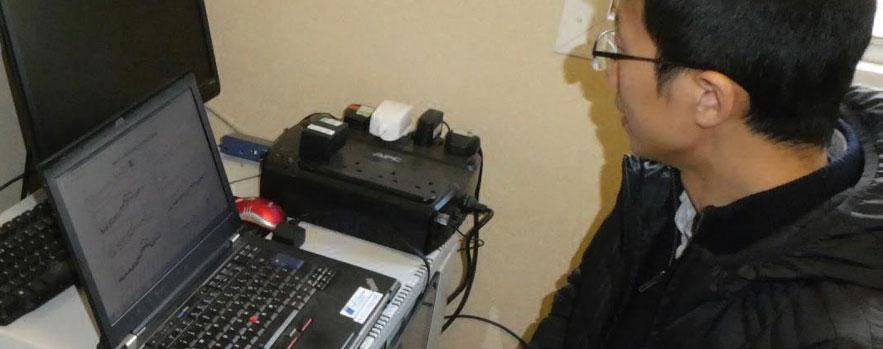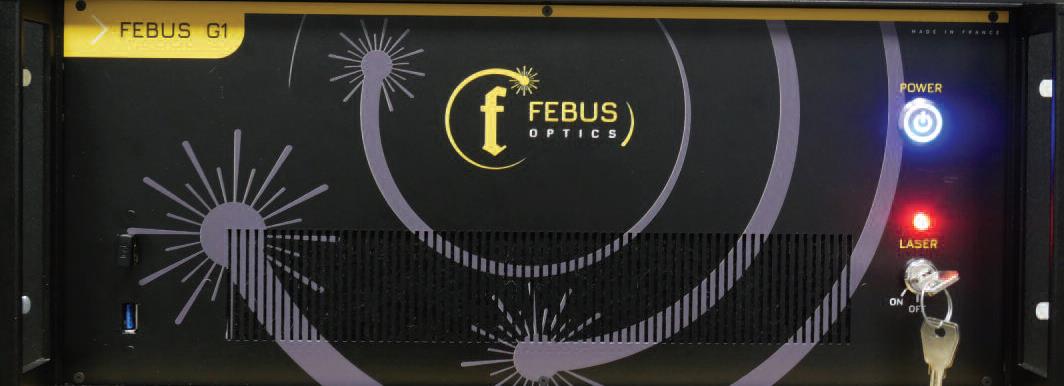
Responding to industry call
In a working group discussion at a CSIC event, industry partners raised the subject of sensing strain in structures and that current distributed fibre optic strain sensing technologies were too slow to capture dynamic events. There was a consensus that the ability to measure strain at a rate of 50Hz or more was needed to fulfil many dynamic applications, such as capturing traffic loading effects on bridges. However, achieving this goal would require development and application of new technology.
CSIC has worked with French SME, FEBUS Optics1 to deliver this capability. Febus had developed a new generation of fast Brillouin fibre optic strain sensing systems, the FEBUS G1. FEBUS and CSIC discussed applying the technology for civil engineering applications, and the challenge was set to create a dynamic infrastructure sensing system.
After six months of development, FEBUS met this challenge and demonstrated dynamic strain measurement at 50Hz over 1km in a fully-functioning system, the FEBUS G1D. This ability means vital performance data can be captured at sub-second rates instead of periodically sampling performance at longer time frames over several minutes. CSIC worked with Febus on minimum system requirements and specifications, and in late 2018, the FEBUS G1D was ready to leave the lab and be deployed in the field.
First deployment on a CSIC project
The FEBUS G1D was used as part of the rockfall early warning system developed by CSIC in a collaborative project with Network Rail to monitor Hooley Cutting: the steep cutting faces either side of a 170-year-old stretch of railway between London and Brighton. The FEBUS system was successfully used to monitor strain changes in a rockfall mesh in real time in order to capture potential rock debris accumulating in the mesh on the cutting (see Transforming infrastructure through smarter information).
Key benefits of fibre optic sensing
Optical fibre sensors can measure many infrastructure parameters, including strain, temperature, displacement, vibration, and, with some mechanical modifications, tilt and acceleration. For sensing requirements that need more than several hundred sensing points (for example embankments and rail track), optical fibre sensing also becomes the lowest cost solution. It eliminates the need for copper cable power cables or battery maintenance and is easy to install.
This ability of distributed fibre optic sensing systems, such as the FEBUS G1, to provide spatially dense information while being simple to install means that fibre optic sensors are becoming an attractive alternative to electrical point sensors for infrastructure sensing.
The system is commercially available and more than 30 FEBUS G1 systems have now been made and deployed around the world.
Implications for whole-life monitoring
The fibre optic sensor cables used by CSIC are identical to telecommunications optical fibre which has been used worldwide since the 1970s and 80s. They are made of silica which does not experience the same failure modes as electrical sensors and is one of the most environmentally stable compounds known; there is no corrosion when the sensors are exposed to humidity, nor do they suffer from electromigration ageing or copper embrittlement. They are also immune to electromagnetic fields present in high voltage environments such as rail.
Corning Glass, a leading manufacturer of optical fibre recently published a white paper on their use, and in particular, the lifespan of the product. In the paper Corning have stated that there is “no ‘theoretical lifetime’ of optical fibres” and that “there is no industry accepted ‘wear out’ mechanism for optical fibre”. They reported that it is “common for customers to report to Corning that trial fibres installed in the late 1970s or early 1980s are still in use today”.
Optical sensing systems which can last for the life of the asset being monitored make whole-life sensing a real option for asset management and can provide the data required to ensure the asset is fit for purpose over its entire lifetime.
We want to demonstrate the intrinsic reliability of optical sensing and what this means for instrumentation and monitoring of infrastructure. Optical analysers are now a cost-effective choice for sensing, with huge savings in the complex installation of electrical sensors, and the majority of the cabling costs eliminated. Sensing is now real-time, and the sensors themselves can outlive the structures that they are designed to monitor.
Philip Keenan, CSIC Business Development Manager
Contact: Phil Keenan, 01223 748586
Team: Dr Cedric Kechavarzi, Dr Xiaomin Xu and Phil Keenan

